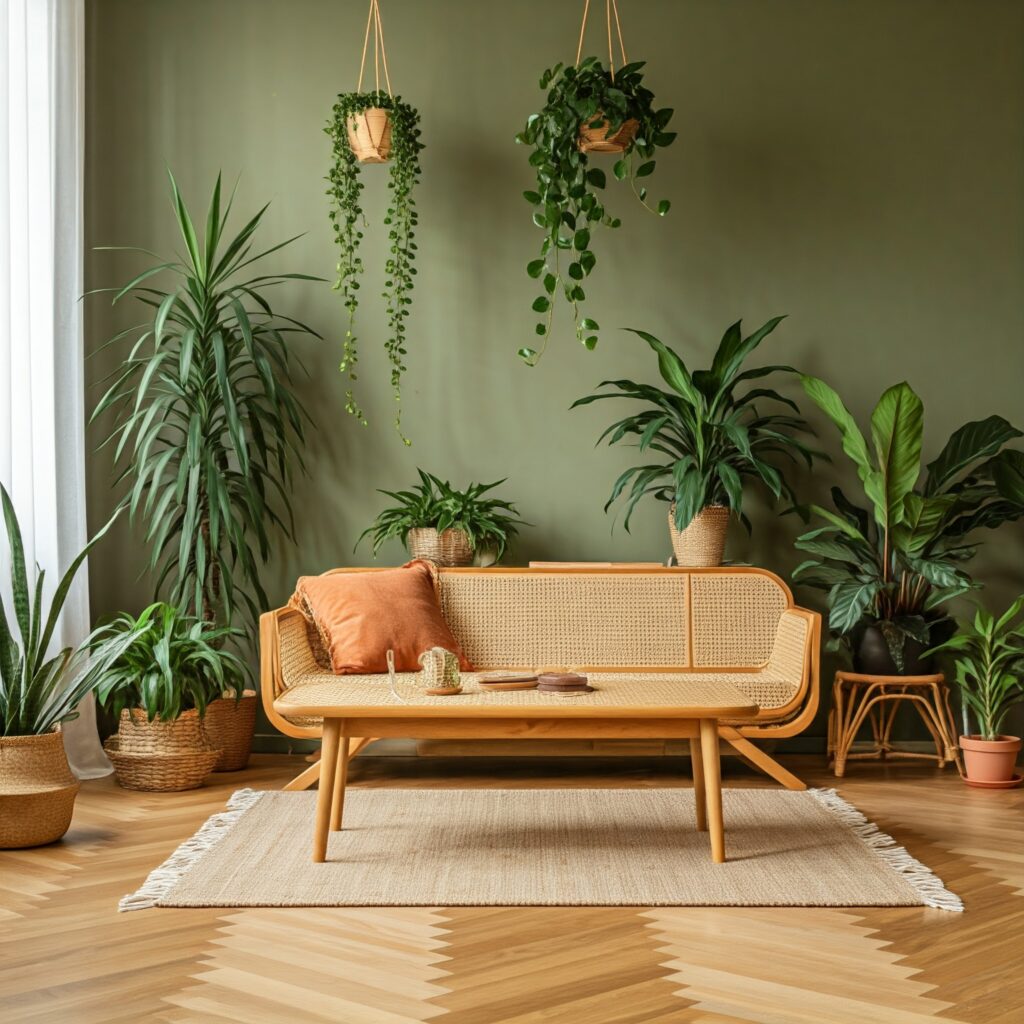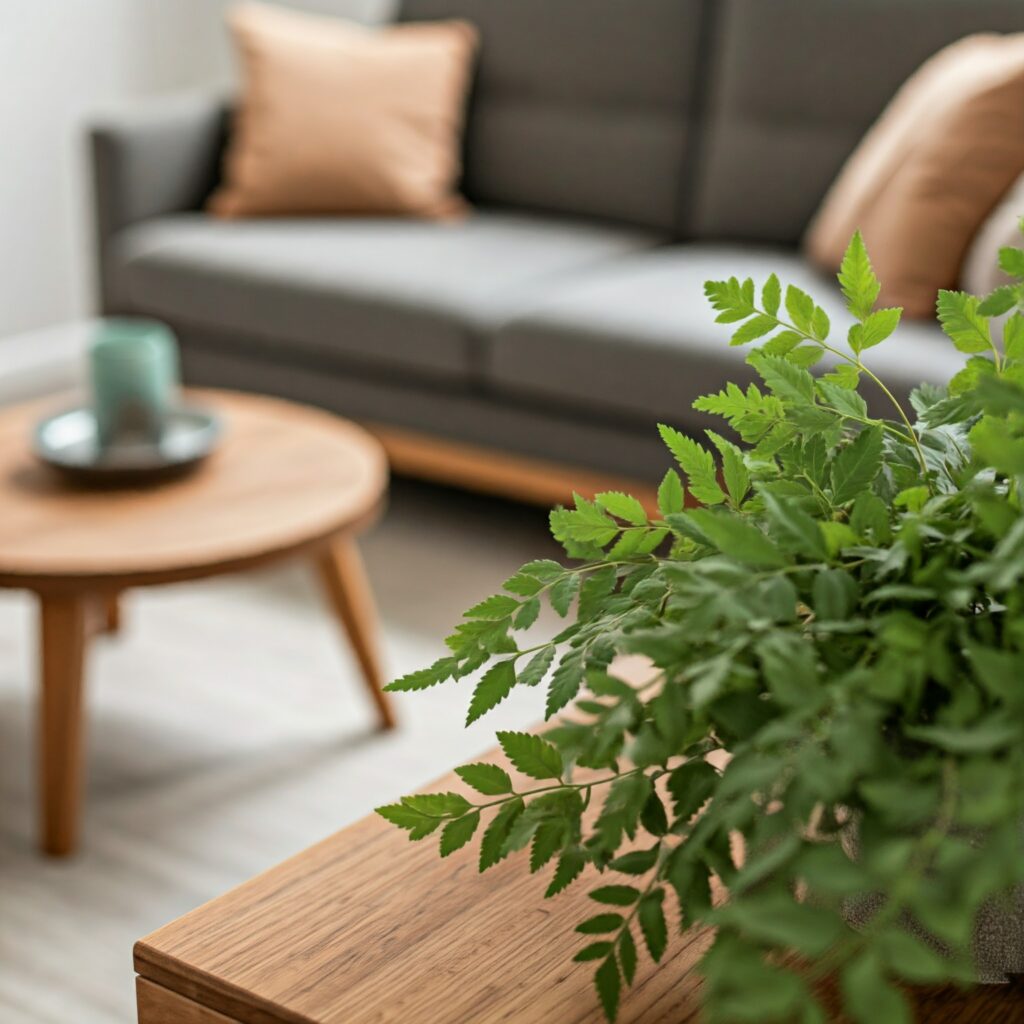In today’s world, where environmental concerns are at the forefront of public consciousness, embracing sustainable home decor is more important than ever. Not only does it help reduce our carbon footprint, but it also promotes a healthier living environment. This comprehensive guide explores what sustainable home decor is, why it matters, how you can transform your space into a stylish, eco-friendly haven, and actionable tips to help you create the sustainable home of your dreams.
Table of Contents
What is Sustainable Home Decor?
Sustainable home decor refers to the practice of choosing furnishings, materials, and design elements that minimize environmental impact. This approach emphasizes using eco-friendly materials, ethical production methods, and energy-efficient designs. By prioritizing sustainability, you contribute to a healthier planet while creating a beautiful and functional living space.
Definition and Principles
Sustainable home decor encompasses various principles aimed at reducing harm to the environment. These include:
- Resource Efficiency: Utilizing materials and products that require less energy and water during their lifecycle.
- Waste Reduction: Choosing items that have a minimal environmental impact, are recyclable, or can be composted at the end of their life.
- Sourcing Responsibly: Opting for materials that are ethically sourced, such as sustainably harvested wood or organic textiles.
By adhering to these principles, you can significantly reduce your home’s ecological footprint.
The Importance of Sustainable Home Decor

Environmental Impact
The production and disposal of traditional home decor items often involve harmful chemicals and excessive waste. Sustainable decor minimizes these negative impacts by utilizing natural, recycled, or biodegradable materials. For instance, opting for furniture made from reclaimed wood reduces the demand for new trees and the energy used in manufacturing new products.
Health Benefits
Many conventional decor items contain volatile organic compounds (VOCs) that can adversely affect indoor air quality. These compounds are found in paints, adhesives, and synthetic fabrics. Opting for non-toxic, sustainable materials enhances the health and safety of your living environment. For example, choosing low-VOC paints and organic cotton upholstery contributes to a healthier indoor atmosphere.
Aesthetic Appeal
Sustainable home decor often features unique, handcrafted items that add character to your space. By choosing eco-friendly products, you can create a one-of-a-kind aesthetic that reflects your values. Many sustainable decor pieces are designed with a focus on craftsmanship and artistry, making them not just decor items but conversation starters as well.
Long-term Savings
Investing in quality, sustainable materials often means less frequent replacements. This can lead to significant savings over time, as well as reduced waste in landfills. For instance, while sustainably sourced hardwood furniture may have a higher upfront cost, its durability means it will last much longer than cheaper, mass-produced alternatives.
Social Responsibility
Supporting sustainable home decor also means supporting ethical labor practices. Many companies that focus on sustainability prioritize fair labor conditions, ensuring that the artisans and workers are compensated fairly. This not only improves the lives of those who produce these goods but also creates a more equitable economy.
Tips for Achieving Sustainable Home Decor

1. Choose Eco-Friendly Materials
When selecting materials for your home, prioritize eco-friendly options such as:
Bamboo
Bamboo is a fast-growing, renewable resource that is durable and stylish. It can be used in flooring, furniture, and decorative accents. Its natural strength makes it an excellent alternative to traditional hardwoods, and it requires less water to grow.
Reclaimed Wood
Using reclaimed wood reduces waste and adds character to your decor. This material often comes from old barns, factories, or other structures, giving it a unique patina that new wood simply cannot replicate. It’s perfect for furniture, flooring, and accent walls.
Organic Fabrics
Look for textiles made from organic cotton, linen, or hemp that are free from harmful chemicals. Organic cotton is grown without pesticides and fertilizers, making it a healthier choice for both the environment and your home. Additionally, hemp is one of the most sustainable materials available, as it requires minimal water and no pesticides.
Natural Stone
Natural stone, such as granite, marble, or slate, can be an excellent choice for countertops and flooring. When sourced responsibly, these materials can last for decades and add a timeless elegance to your space.
2. Invest in Quality Furniture

Opt for furniture that is built to last. Consider brands that prioritize sustainability in their manufacturing processes. Look for items made from recycled or sustainably sourced materials and choose timeless designs that won’t go out of style.
- Furniture Types to Consider:
- Sustainable Sofas: Look for sofas with frames made from reclaimed wood and upholstery made from organic fabrics.
- Dining Tables: A reclaimed wood dining table not only serves as a functional piece but also as a focal point in your dining room.
- Eco-Friendly Beds: Consider beds made from sustainably sourced wood or metal and mattresses filled with natural latex or organic cotton.
3. Incorporate Plants
Bringing nature indoors not only enhances your decor but also improves indoor air quality. Choose low-maintenance, native plants that thrive in your environment, such as snake plants, pothos, or peace lilies.
- Benefits of Indoor Plants:
- Air Purification: Plants naturally filter toxins from the air, making your home healthier.
- Aesthetic Value: They add a touch of greenery and life to any space, enhancing the overall aesthetic.
4. DIY Decor Projects
Get creative with DIY projects using upcycled or reclaimed materials. From repurposing old furniture to crafting art from recycled items, these projects can be both fun and sustainable.
- Project Ideas:
- Upcycled Furniture: Sand down an old dresser and repaint it with non-toxic paint for a fresh look.
- Wall Art: Create a unique piece of art using reclaimed wood or vintage materials.
- Garden Planters: Use old pallets or barrels to create stylish planters for your indoor or outdoor garden.
5. Energy-Efficient Lighting
Upgrade your lighting with energy-efficient options like LED bulbs. These not only reduce energy consumption but also come in a variety of styles to complement your decor.
- Lighting Tips:
- Natural Light: Maximize natural light by using sheer curtains and strategically placing mirrors to reflect light.
- Smart Lighting: Consider smart bulbs that can be controlled via an app to reduce energy usage when you’re not home.
6. Support Local Artisans

Buying from local artisans reduces the carbon footprint associated with shipping and supports your community. Look for handmade items that showcase local craftsmanship and sustainable practices.
- Where to Find Local Artisans:
- Craft Fairs: Attend local craft fairs or farmers’ markets to discover unique pieces.
- Online Platforms: Websites like Etsy allow you to find artisans from your region, ensuring you support local economies.
7. Choose Sustainable Paints and Finishes
When painting or finishing your home, opt for low-VOC or zero-VOC paints. These options reduce harmful emissions and are available in a wide range of colors.
- Painting Tips:
- Test Samples: Before committing to a color, test samples in your space to see how they interact with natural light.
- Eco-Friendly Finishes: Use natural oils and waxes for finishing wood furniture instead of conventional varnishes.
Exploring Sustainable Decor Styles
Sustainable home decor can fit into various design styles. Here are some popular sustainable decor styles and how to incorporate them into your home:
Minimalism
Minimalism focuses on simplicity and functionality. This design philosophy encourages decluttering and prioritizing quality over quantity. By embracing minimalism, you can create a serene and peaceful living space.
- Key Features:
- Neutral Color Palette: Use soft colors like whites, grays, and earthy tones.
- Functional Furniture: Choose pieces that serve multiple purposes, like a coffee table with storage.
- Less is More: Limit decor items to only those that are meaningful or serve a practical purpose.
Biophilic Design
Biophilic design emphasizes connecting indoor spaces with nature. This approach can enhance your well-being and create a calming environment.
- Key Features:
- Natural Elements: Incorporate wood, stone, and water features.
- Indoor Gardens: Designate areas for indoor plants and herb gardens.
- Natural Light: Maximize window space and use skylights to bring in more light.
Vintage and Retro
Vintage and retro decor adds character and charm to your home while promoting sustainability by reducing demand for new products. Look for unique pieces that tell a story and have stood the test of time.
- Key Features:
- Mix and Match: Combine vintage finds with modern pieces for an eclectic look.
- Quality over Quantity: Invest in high-quality vintage items that are durable and timeless.
- Restoration Projects: Consider restoring or upcycling vintage furniture to breathe new life into it.
Rustic
Rustic decor focuses on natural materials and a cozy, homey feel. This style often incorporates elements from nature, such as wood, stone, and metal.
- Key Features:
- Natural Materials: Use reclaimed wood, stone, and organic fabrics.
- Warm Color Schemes: Opt for warm, earthy tones that evoke a sense of comfort.
- Handcrafted Items: Include handmade or artisanal pieces to enhance the rustic aesthetic.
Modern

Modern decor is characterized by clean lines, simplicity, and a functional approach. Sustainable modern design often
incorporates eco-friendly materials and smart technology.
- Key Features:
- Sleek Furniture: Choose furniture with clean lines and minimalist designs.
- Smart Home Features: Incorporate energy-efficient appliances and smart lighting.
- Sustainable Materials: Use materials like bamboo, recycled metal, and glass.
Case Studies in Sustainable Home Decor
Case Study 1: Eco-Friendly Renovation
The Johnson Family Home underwent a complete renovation to transform their space into a sustainable oasis. They replaced traditional materials with eco-friendly alternatives, including:
- Solar Panels: Installed on the roof to harness renewable energy.
- Reclaimed Wood: Used for flooring and cabinetry, providing a rustic yet modern aesthetic.
- Energy-Efficient Appliances: Replaced old appliances with Energy Star-rated models to reduce energy consumption.
The result was a stylish, eco-friendly home that significantly reduced their carbon footprint.
read it also: 10 Simple Hacks for Sustainable Living That Will Transform Your Life Instantly!
Case Study 2: Small Apartment Transformation
Sarah’s Urban Loft is a prime example of how to achieve sustainable decor in a small space. By focusing on multi-functional furniture and creative storage solutions, she created a stylish environment without cluttering her space.
- Furniture Choices: Opted for a sofa bed to maximize space and comfort.
- Vertical Gardens: Installed wall planters to bring greenery indoors without taking up floor space.
- Upcycled Decor: Created art from reclaimed materials, adding a personal touch to her loft.
Sarah’s transformation showcases how even small spaces can be both stylish and sustainable.
Conclusion
Sustainable home decor is more than just a trend; it’s a lifestyle choice that benefits both you and the planet. By making informed decisions about the materials you use and the items you choose for your home, you can create a stylish, eco-friendly space that reflects your values.
Embrace sustainable living today and contribute to a healthier, more beautiful world for future generations. Your commitment to sustainable decor not only enhances your living environment but also plays a vital role in preserving the planet for future inhabitants.
Share this content:

